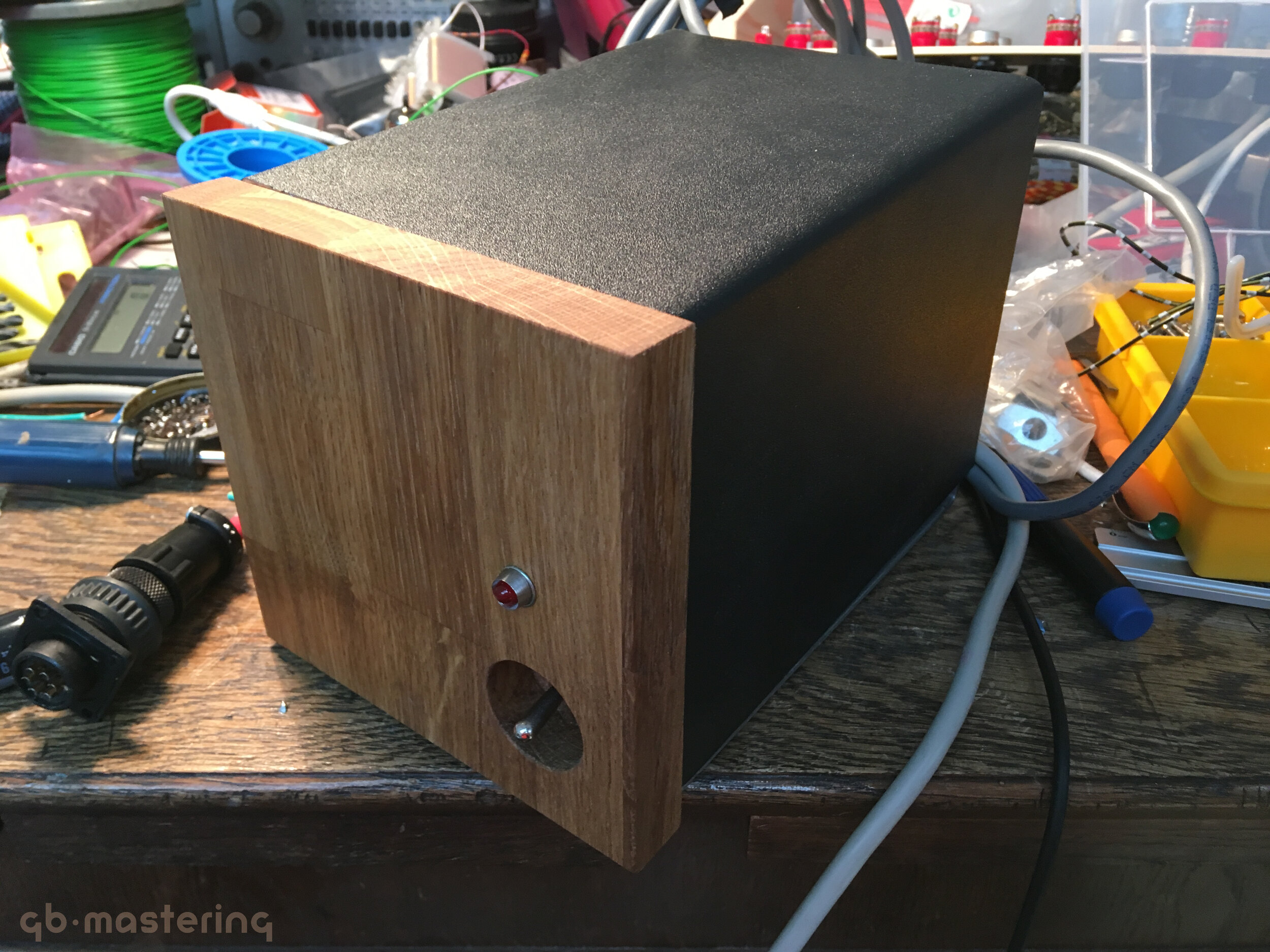EAR 825Q
The EAR 825Q is a 5 band stereo mastering EQ with an inductor based EQ circuit, tube amps and three transformers per channel. Since Tim de Paravicini, the original designer, wound the interstage and output transformers himself in the original devices there’s no way to buy them or get them elsewhere. So there was no alternative to make them ourselves. First we had to calculate which windings the transformer would need based on the schematic. Challenging- there is a set of primary sections, cathode feedback windings and a set of secondary windings. Non of them were really known. Additionally we had to keep in mind the idle current of output tubes - this is a kind of class A output stage. That means we have to deal with an air gapped transformer system.
Then we wounded some prototypes with different amounts of copper per winding and chose the one which gave the best results. Luckily my father bought an old Aumann winding machine, but still it takes some time to make just one transformer, not speaking a set of four. As the input transformers we chose Lundahls, since our available magnetic core material wasn’t really suited for this application. But the transformers aren’t the only custom thing in this device. There are 4 inductors per channel which we also had to wind (per hand this time). The magnetic behavior of inductive materials are hardly predictable. So we had to go the same way: calculate, wind, measure, curse and start again from new.
Another big part of the built were the control elements. Luckily we were able to obtain some 41 detent potentiometers with the right value for the gain controls. For the frequency selections we chose Grayhill Type 71 switches. The tube stages use three PCC88 (Valvo NOS) tubes per channel and Mundorf coupling capacitors. The filter banks consist of the hand wound inductors and WIMA capacitors.
Another tricky part was to get everything into a 3U chassis. Since our hand wired PCB aren’t as space-saving as the original ones it was quite hard to find a solution to fit everything in. The PSU had to go to an external housing, which is also a real breakthrough for the noise floor. The four large interstage and output transformers were stored in an aluminum bracket in the middle of the unit. Still the cable connections between the different PCBs are quite short. When you’re building a complex device like this the first time you have to disassemble some parts regularly. That’s why it’s very helpful to have everything connected via sockets, although this probably wouldn’t be the way to go in serial production. The bypass is relay controlled and only disables the filter section as designed by Tim de Paravicini.
Designing the faceplate so it looks like the original also was a lot of work. I read about owners of the original device who wished for another faceplate and/or knob design since this is the only thing they don’t like about this EQ. But what should I say, I really love it!
Now to the sound: This EQ is absolutely smooth. The highs and lows are phenomenal. Not exactly but quite similar to a Pultec if you ask me. Put the high shelf to 20kHz and make the music shine! I set the bass shelf to 30Hz most of the time to give it a Pultec-like feeling. In the midrange I especially like to boost 700Hz. The Q on all bands is fixed. It tends to be more on the wider side, but still small enough to make fine adjustments.
Features
hand wound interstage & output transformers
Lundahl input transformers
Hand wound inductors
WIMA capacitors in the filter section
Mundorf coupling capacitors
Three NOS PCC88 tubes per channel
External PSU
Grayhill switches & detented potentiometers
Relay bypass






